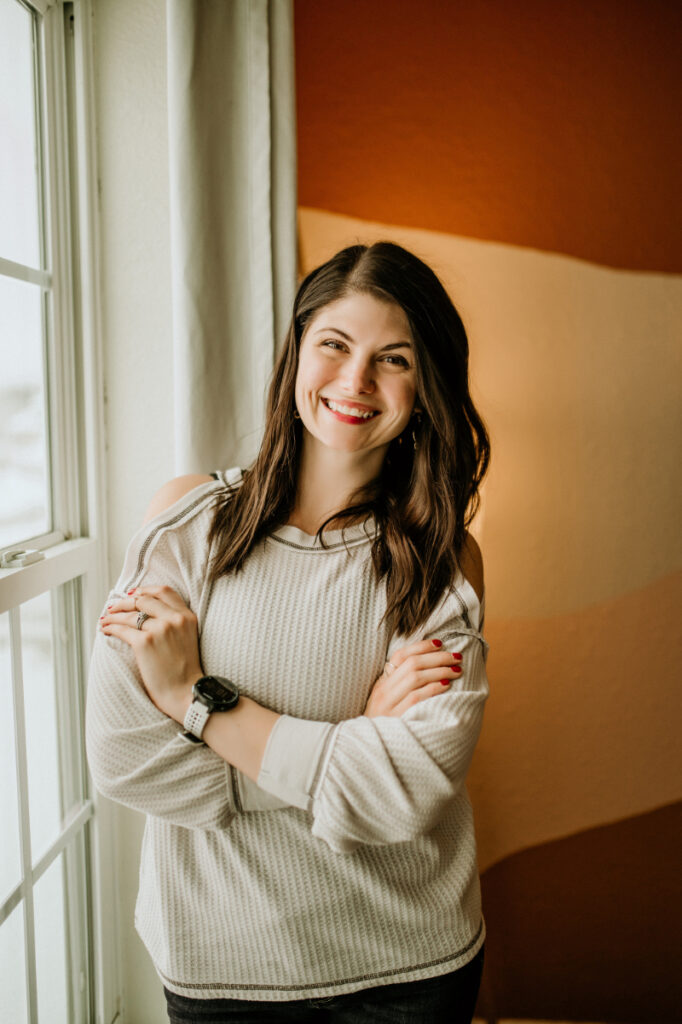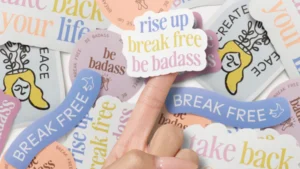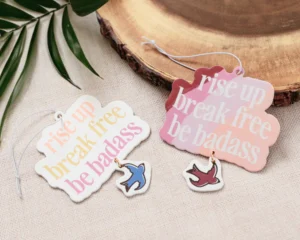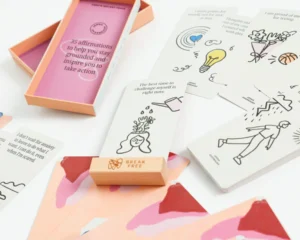How to Manage Anxiety and OCD: Why Keeping Your Recovery Tools Front and Center Matters
April 29, 2025
When you’re working on recovery from anxiety or OCD, one of the most common traps is: thinking you’ll remember what helps in the moment. That you’ll just know what to do when anxiety kicks in. But if you’ve ever been hijacked by a spiral or pulled back into a compulsion after doing “so well,” you know the truth—anxiety doesn’t wait around for you to get centered.
And that’s why one of the most effective (and overlooked) strategies in learning how to manage anxiety and OCD is simple: keep your tools front and center.
Not buried in a drawer. Not tucked away for later. But visible, accessible, and ready for the moments that matter.
So today, we’re digging into why it helps to keep your recovery tools visible—and how small visual cues can make a big difference when anxiety and OCD try to take over. Let’s get started!
Why It’s Hard to Manage Anxiety and OCD Without Daily Support
OCD and anxiety thrive in default mode. When your brain feels uncertain or afraid, it scrambles to do what it knows—check, avoid, ruminate, seek reassurance, or run through mental loops. And if your recovery tools aren’t easily accessible, your brain won’t reach for them.
It’s not a matter of willpower. It’s brain wiring.
That’s why keeping reminders visible matters so much. You’re giving yourself a visual nudge back to your values and recovery mindset—especially when anxiety is trying to convince you to do the opposite.

How Visual Reminders Help You Manage Anxiety and OCD More Effectively
Here’s what I tell my clients (and what I remind myself often): you don’t need to figure it all out in the moment—you need reminders of what you already know.
Because when anxiety takes over, even the most practiced tools can feel out of reach.
This is where visual cues can be game-changing. When you see a card, sticker, or phrase that anchors you back into recovery, it interrupts autopilot. It pulls you out of mental spirals and into grounded action. It says, Hey, you’ve done this before. You know the next right thing.
What “Front and Center” Looks Like in Real Life
Keeping tools “front and center” doesn’t have to be complicated. It’s about creating an environment that supports your healing—not just in therapy, but in your everyday spaces.
Here are a few simple examples:
- Stick an encouraging sticker to your bathroom mirror so you see it first thing
- Tuck an affirmation into your wallet or phone case
- Keep visual cues in your car to remind you to breathe, not spiral, during a rough drive
- Keep a recovery phrase or exposure mantra by your bed, in your kitchen, or on your laptop
You don’t have to overhaul your entire routine to start managing anxiety and OCD more effectively. You just need small, steady reminders that keep you grounded when things get loud.
That’s why I created the Break Free collection—tools like the affirmation Action Cards, calming Air Fresheners, and meaningful Stickers to help you stay connected to your recovery (especially when your brain is pulling you in a hundred directions).
Why Consistency Beats Intensity in Managing Anxiety and OCD
You don’t have to wait for a “really bad day” to use your recovery tools. In fact, one of the best ways to reduce the impact of anxiety over time is to build small, consistent support into your everyday life.
When your brain sees your tools often, they become familiar—and familiar things feel safer. That sense of safety helps your nervous system stay regulated, which means you’re less likely to react impulsively when anxiety shows up.
This is a foundational part of the work I teach in the OCD and Anxiety Recovery Blueprint—building recovery into your routine so you’re not starting from scratch every time things get hard.
My Favorite Tools That Keep Me Focused on Recovery
I created the Break Free Collection because I wanted something more than just cute affirmations. I wanted practical, portable tools that actually help in real-life moments.
Here’s what I use most:
- Break Free Action Cards – These go with me everywhere. Each card has a prompt or reminder designed for exposure, grounding, or self-compassion. When I feel that urge to ruminate or check, pulling a card helps me break the cycle.
- Break Free Stickers – I put them in places I tend to spiral: my planner, my fridge, even the back of my phone.
- Break Free Air Fresheners – Yes, they smell good. But they also serve as calming, visible reminders that I’m allowed to pause, breathe, and return to my values—especially on the go.
These tools aren’t “extras.” They’re part of my environment now—and that makes a big difference in how I show up for myself every day.



Real Help for How to Manage Anxiety and OCD—One Visual Cue at a Time
You don’t need to try harder to recover. You need support that meets you in real life.
Recovery isn’t about doing it perfectly or remembering every strategy when your brain is spinning. It’s about building an environment that gently pulls you back to what matters. That’s what happens when your tools are visible—when your support isn’t buried in a drawer, but right in front of you.
If you’re looking for a way to make that shift, the OCD and Anxiety Recovery Blueprint is a powerful place to start. It’s not just information—it’s a clear, guided process to help you show up differently when anxiety tries to take over.
And if you’re craving small reminders to stay grounded throughout the day, don’t forget to check out my Break Free Collection. They were made for that. From action cards that challenge anxious thinking to calming visual cues you can keep in your car, your pocket, or your home—these tools keep your recovery close.
Do you need help breaking out of an overthinking spiral? You can watch my FREE masterclass, Stop The Spiral, whenever you’re ready. Or tune in my All The Hard Things podcast for honest conversations and simple strategies that work.
You don’t have to wait for a perfect moment to start showing up for yourself. Start where you are. Start with what’s in front of you. That’s where the change begins.
most popular episodes
Love my podcast?
Episode 112: Postpartum OCD and False Memory OCD
Imagine how in depth I can go in an online course. Instantly downloadable and game-changing. Take the next step towards an amazing life.